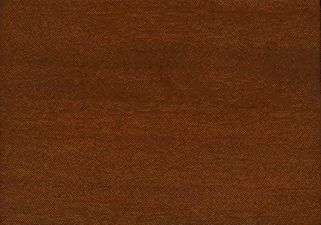
American cyrilla (Cyrilla racemiflora)
Family: Cyrillaceae
Common names: American cyrilla, Barril, Beetwood, Bloodwood, Bois couche, Clavellina, Colorado, Ironwood, Leatherwood, Llorona, Olivier montagne, Palo colorado, Palo de jutia, Piojillo, Piojito, Red titi, Sabina macho, Southern leatherwood, Swamp cyrilla, Titi, Tranca de puerto, Warimiri, White titi, Yanilla
Distributed in: Brazil, Cuba, French Guiana, Guadelope [France], Honduras, Jamaica, Mexico, Puerto Rico [US], United States, Venezuela (Central America, Latin America, North America, Oceania and S.E. Asia)
Common uses: Charcoal, Fuelwood, Furniture, Heavy construction, Light construction, Piling, Poles, Turnery, Wharf construction
Tree size: Tree height is 20-30 m
Colors: the heart isRed, Reddish brownand the sapwoodPaler than heartwood
.The grain isInterlocked, the textureMediumand the lusterSlightly lustrous
Natural durability: Susceptible to attack from termites (Isoptera), Susceptible to insect attack
Kiln Schedules: Dry at a slow speed
Drying Defects: Severe surface checking, Severe twisting/warping
Ease of Drying: Fairly Easy
Tree Identification: Bole/stem form is unknown
Comments: General finishing qualities are rated as good
Boring: Easy
Cutting Resistance: Cutting Resistance with dry wood is easy
Gluing: Fairly Easy to Very Easy
Mortising: Finishes well
Moulding: Good finishing
Movement in Service: Good finishing
Nailing: Fairly Easy to Very Easy, Very Good to Excellent
Planing: Planes well, to a good finish
Resistance to Impregnation: Permeable sapwood
Resistance to Splitting: Excellent
Response to hand tools: Easy to machine
Screwing: Easy to screw
; Turning: Good results
- Numerical data Metric
- Numerical data English
- Strength properties
- References
 |
 |
 |
 |
| Item |
Green |
Dry |
Metric |
| Specific Gravity |
|
|
|
| Density |
|
753 |
kg/m3 |
| Bending Strength |
|
|
kg/cm2 |
| Crushing Strength |
|
|
kg/cm2 |
| Hardness |
|
|
kg |
| Impact Strength |
|
|
cm |
| Shearing Strength |
|
|
kg/cm2 |
| Stiffness |
|
|
1000 kg/cm2 |
| Tangential Shrinkage |
10 |
|
% |
| Radial Shrinkage |
6 |
|
% |
| Weight |
737 |
592 |
kg/m3 |
| Maximum Load |
|
|
cm-kg/cm3 |
| Toughness |
|
|
cm-kg |
| Static Bending |
|
|
kg/cm2 |
|
 |  |  |  | | Item | Green | Dry | English | | Density | | 47 | lbs/ft3 | | Weight | 46 | 37 | lbs/ft3 | | Radial Shrinkage | 6 | | % | | Tangential Shrinkage | 10 | | % | | Volumetric Shrinkage | 14 | | % | |
Shrinkage, Tangential = large
Shrinkage, Radial = large
Shrinkage, Volumetric = large
Shrinkage, Tangential = fairly large
Shrinkage, Radial = fairly large
Density (dry weight) = 46-52 lbs/cu. ft.
Berni, C.A., Bolza, E., Christensen, F.J.,1979,South American Timbers - The Characteristics, Properties and Uses of 190,Species,C.S.I.R.O Div. Building ResearchLittle, E.L., Wadsworth, F.H.,1964,Common Trees of Puerto Rico and the Virgin Islands,U.S.A. Department of Agriculture, Agriculture Handbook,No.249Longwood, F.R.,1961,Puerto Rican Woods - Their Machining Seasoning and Related Characteristics,U.S.A. Department of Agriculture, Agriculture Handbook,No.205Record, S.J., Hess, R.W.,1943,Timbers of the New World,Yale University PressRecord, S.J.,1938,The American Woods of the Orders Celastrales, Olacales and Santalales,Tropical Woods,7(53,pp11-38Swabey, C.,1941,The Principal Timbers of Jamaica,Department of Science and Agriculture Jamaica Bulletin No.29Takahashi, A.,1975,Compilation of data on the Mechanical Properties of Foreign Woods (Part 2,Central and South America,Shimane University, Japan, Research Report on Foreign Wood No.4
|








